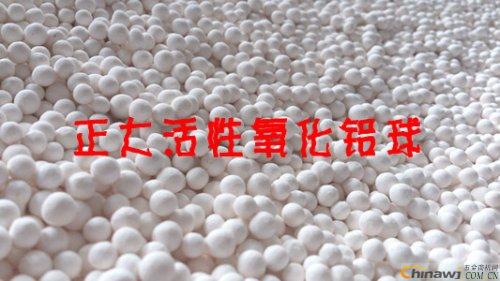Activated alumina spheres typically refer to gamma-alumina (γ-Al₂O₃), which is produced by heating and dehydrating hydrated alumina, specifically pseudoboehmite, at high temperatures. In the commercial market, most available alumina exists in the form of hydrated pseudoboehmite, a result of its specific applications in the catalytic industry. Research has shown that the structural characteristics of pseudoboehmite directly influence the performance and application of the final product. The water content varies depending on the production method, leading to diverse functional properties.
After two decades of research and development, the Shanxi Institute of Coal Chemistry, Chinese Academy of Sciences, has successfully conducted multiple industrial-scale experiments, establishing a complete set of proprietary technologies for large-scale production. These technologies are characterized by: 1) A unique synthesis process that effectively addresses production instability; 2) Alumina primarily used as a catalyst support in petrochemical industries, but also applicable as a special material; 3) A versatile reaction system that allows for the production of various types of alumina—such as microporous, mesoporous, and macroporous—by simply adjusting raw materials or process conditions; 4) Flexibility in raw material selection, including aluminum hydroxide derived from bauxite or coal gangue-based sodium aluminate solutions, aluminum sulfate, and other aluminum compounds. The process can also utilize inexpensive aluminum salts, sodium aluminate, carbon dioxide, and inorganic acids. Notably, waste resources like coal gangue can be utilized as starting materials, with sodium aluminate and aluminum salts obtained through alkali or acid solutions.
High-performance activated alumina balls offer several benefits when used in unshaped refractory mixtures, such as increased density, fluidity, and mechanical strength, enhanced formation of secondary mullite, and reduced water content and porosity. Additionally, activated alumina functions as an effective desiccant, offering high moisture absorption, rapid drying, and regenerability through baking at 400–500°C. The term "activated alumina" refers to calcined alumina that is finely ground, with a basic composition of α-Al₂O₃, where the primary crystal size ranges from 1 μm, making up 20% to 90% of the structure. Its chemical formula is Al₂O₃, with a molecular weight of 101.96 and CAS number 1344-28-1.
Http://news.chinawj.com.cn
 Submission:
Submission: 
 Submission:
Submission: 
Engineered Wood Flooring,Spc Flooring Cutting Tools,Spc Flooring For Libraries,Spc Flooring Sample Box
Changzhou Yingda New Material Co., Ltd , https://www.yingdaspc.com